RARE* 1918 Dated - Battle of the Aisne Trench Combat Map - "Berry-Au-Bac" - Sgt. A. T. Bertolette - 108th Field Artillery
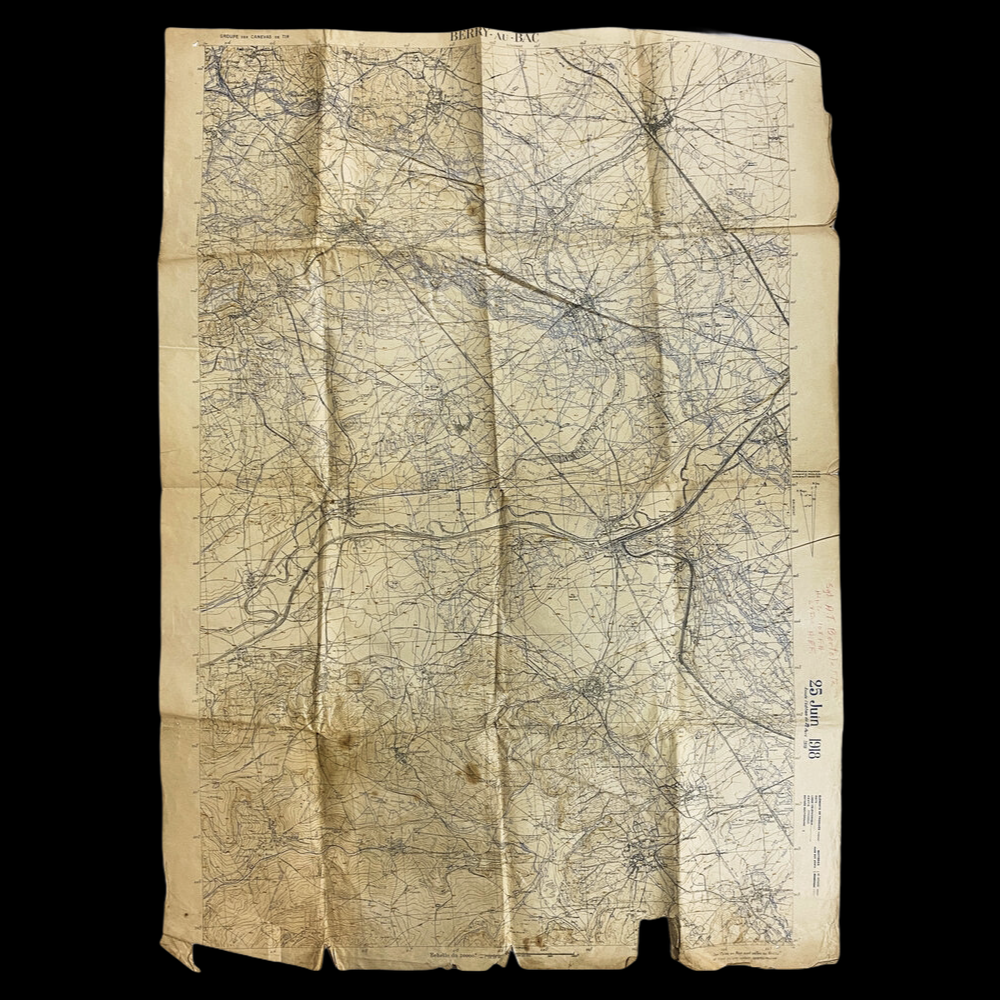







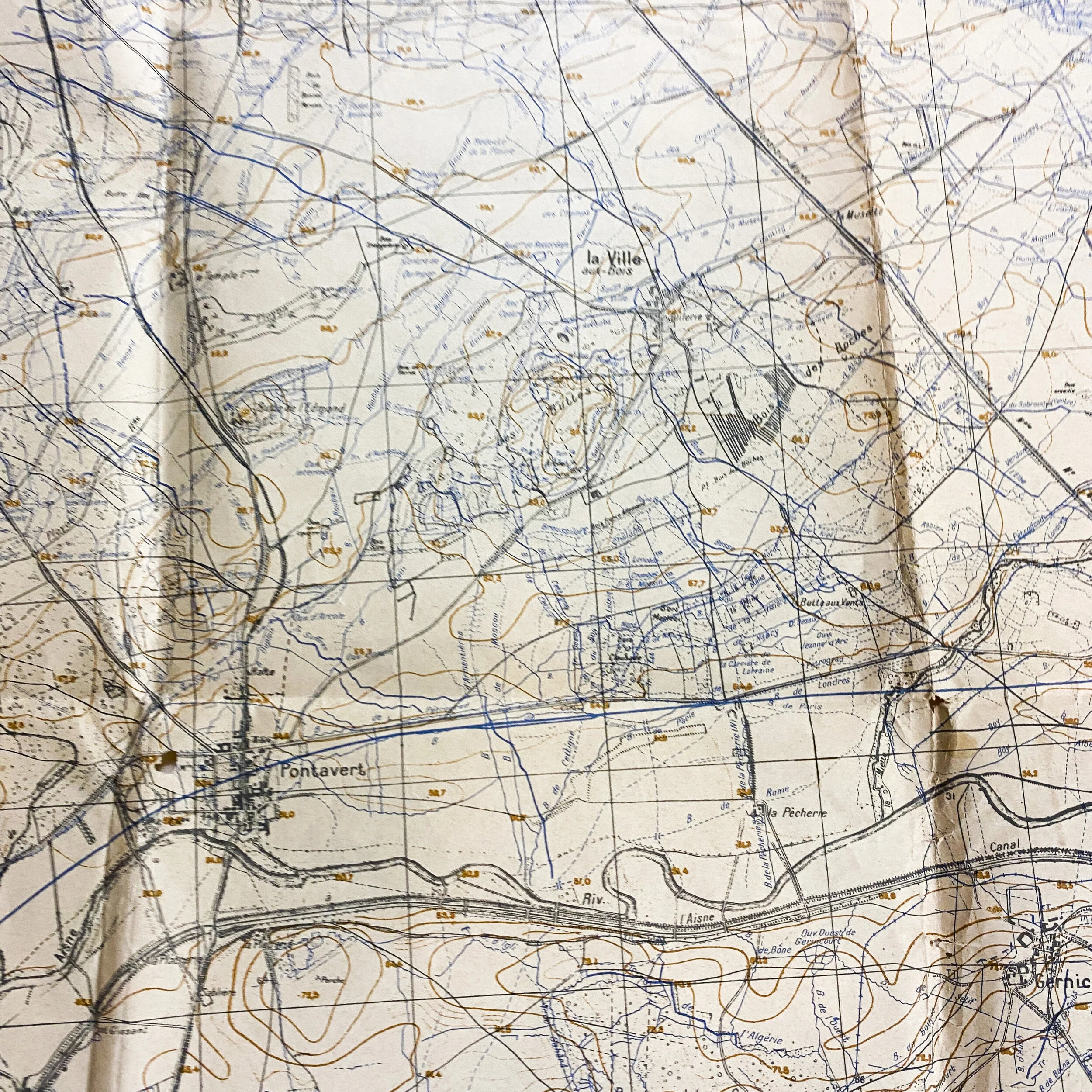









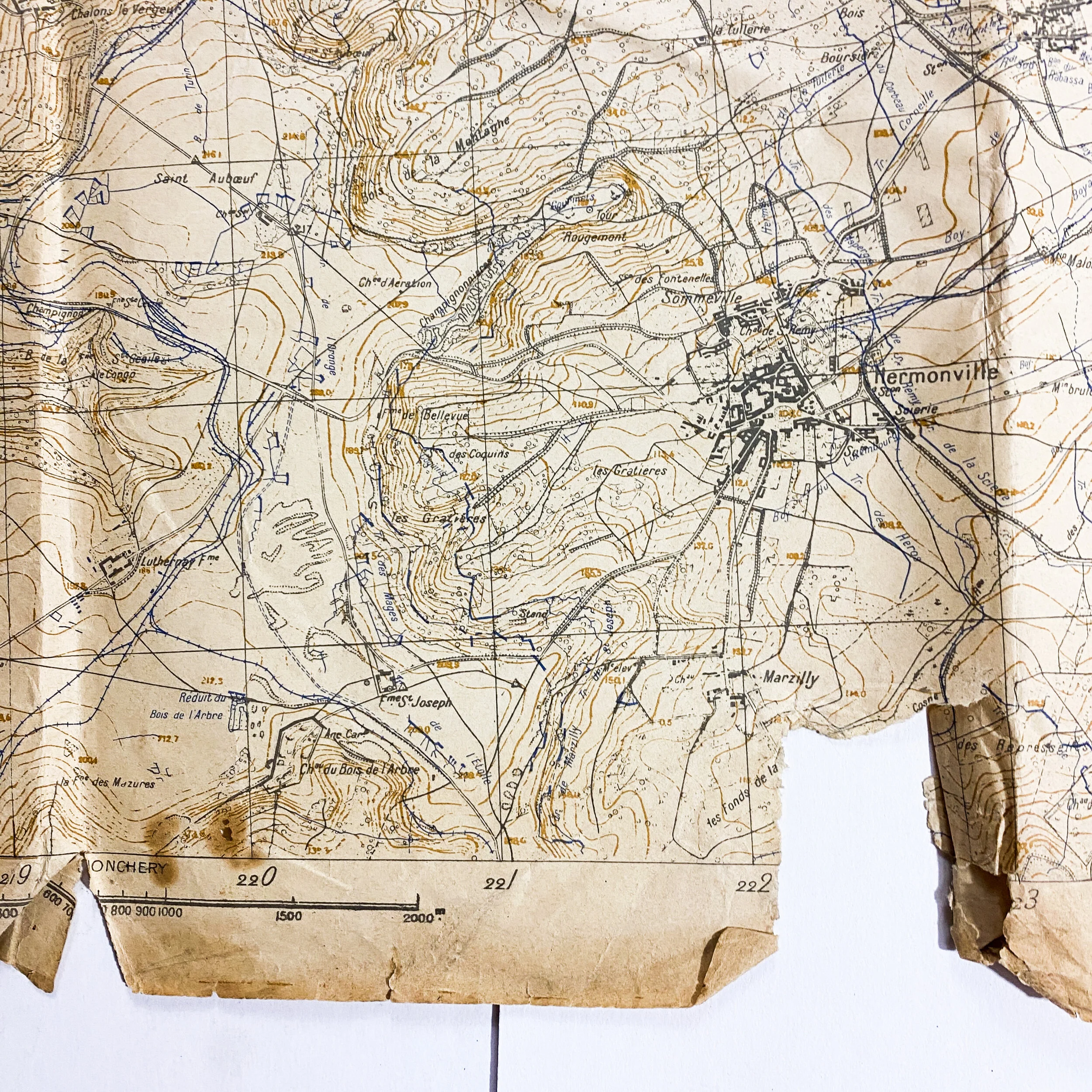





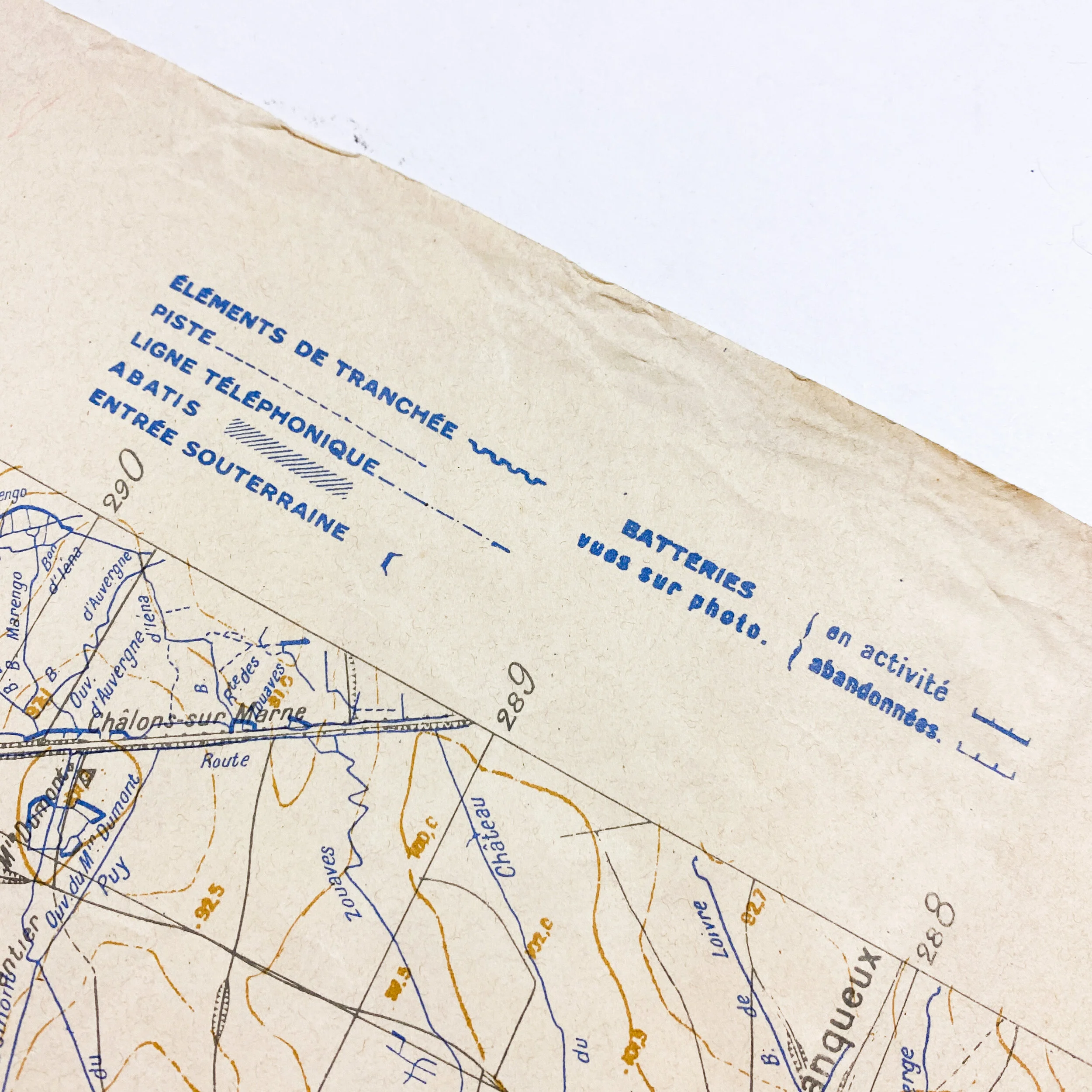

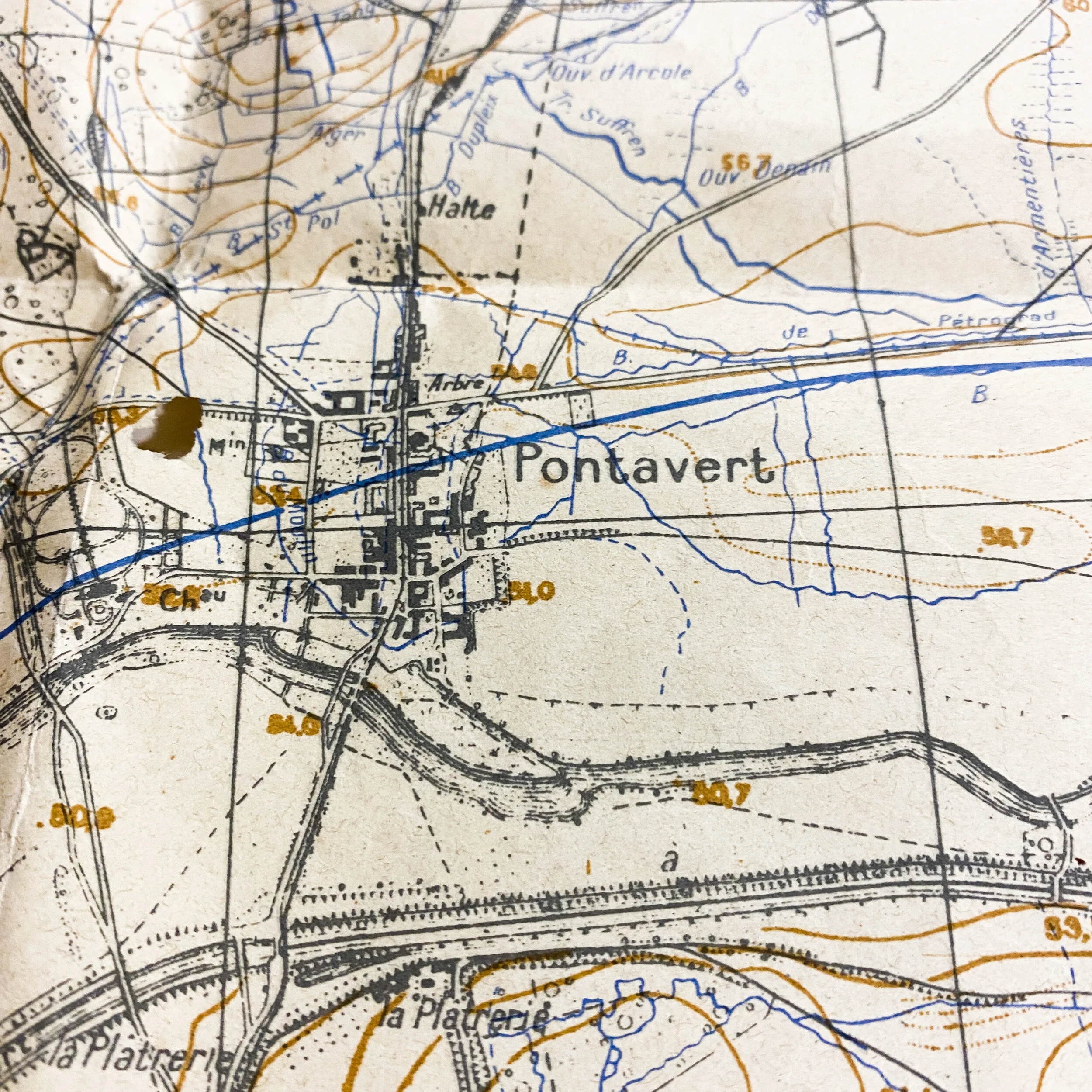
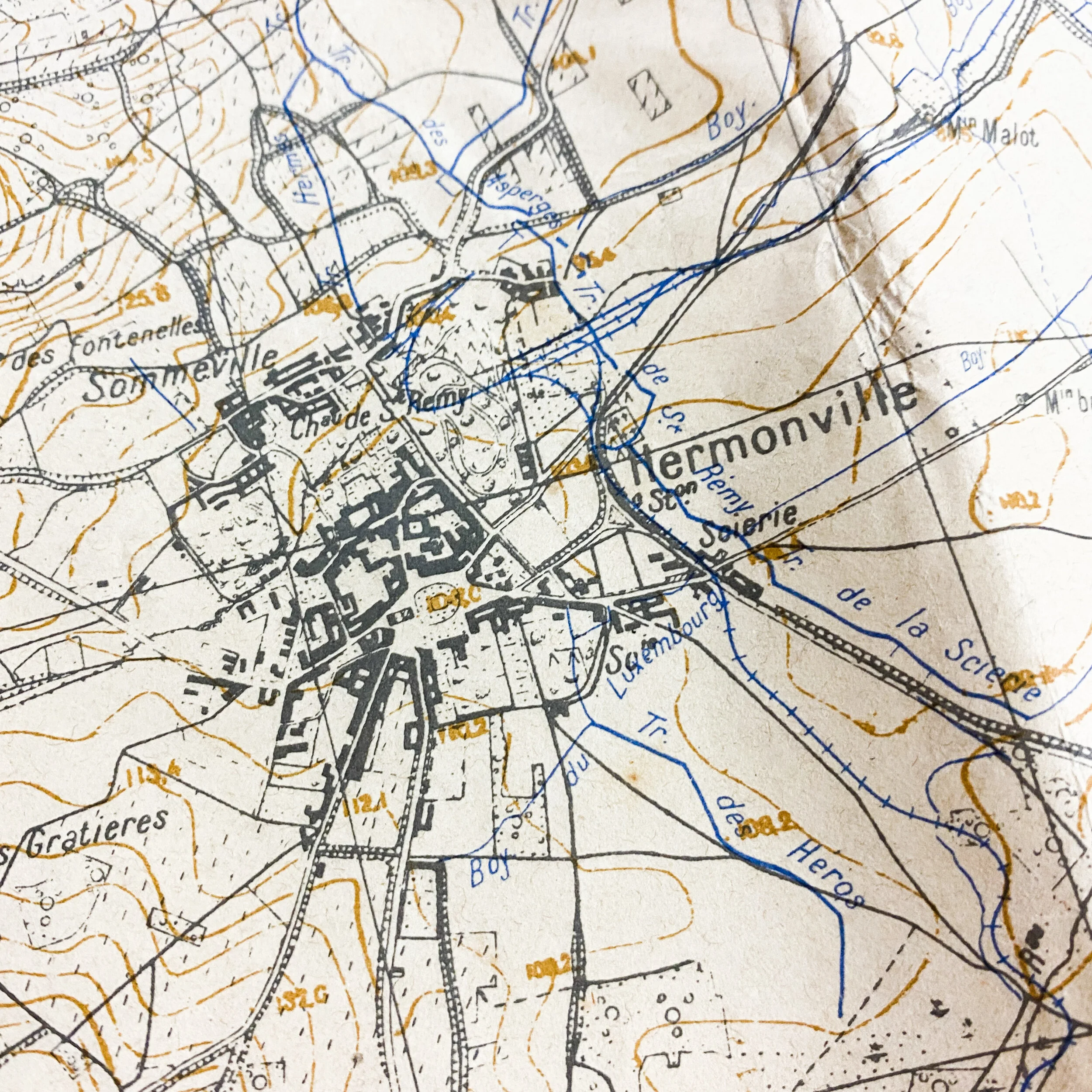
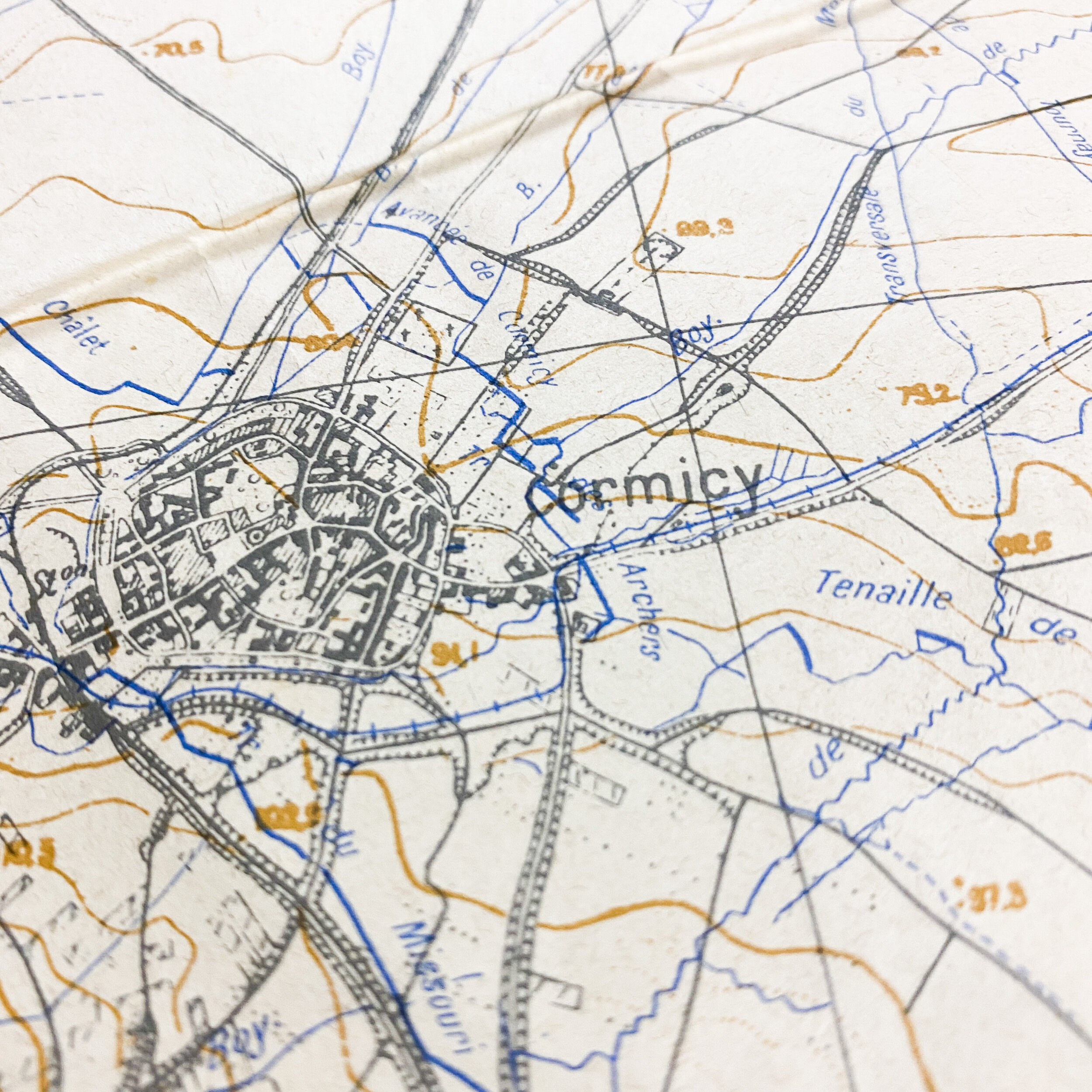





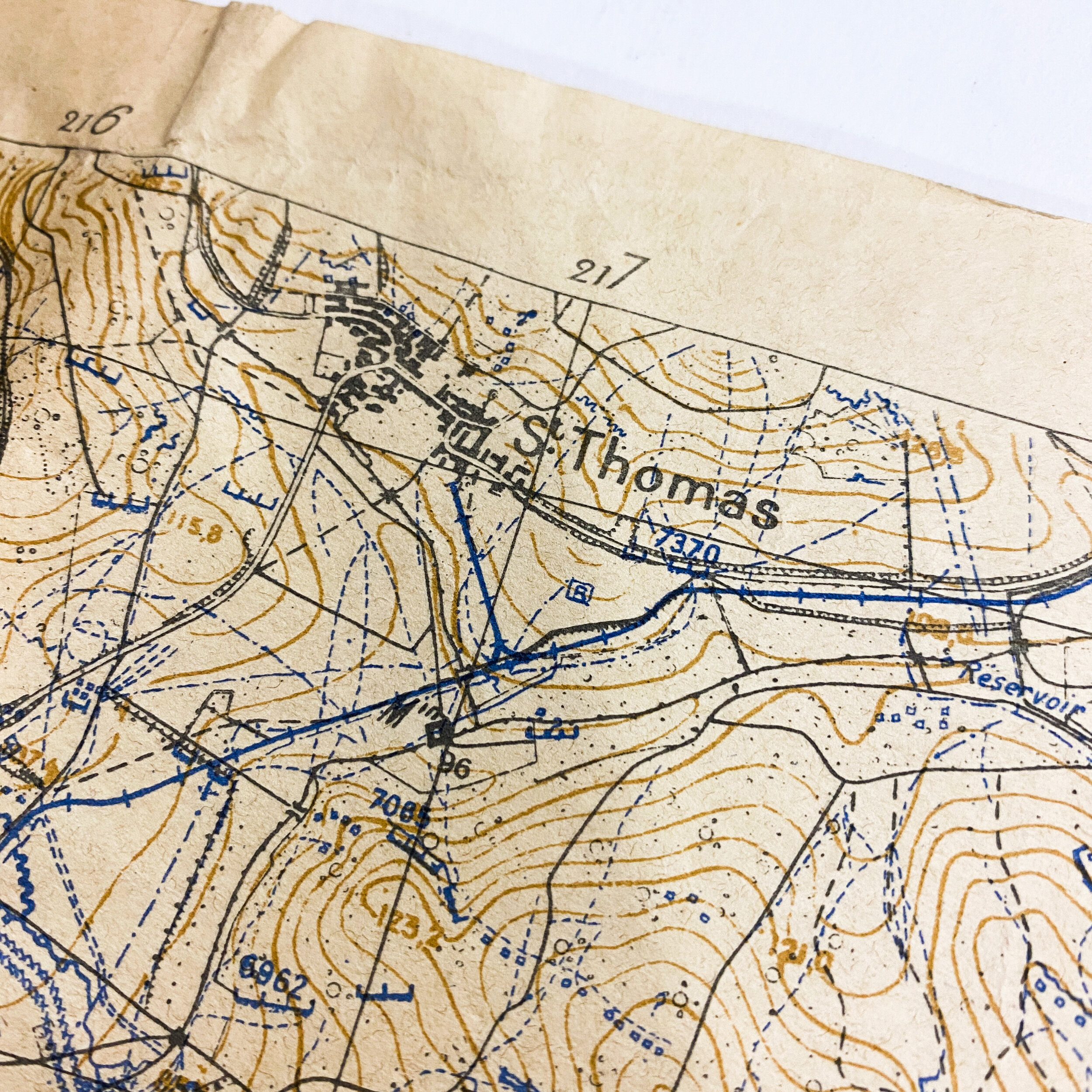
RARE* 1918 Dated - Battle of the Aisne Trench Combat Map - "Berry-Au-Bac" - Sgt. A. T. Bertolette - 108th Field Artillery
*From the ‘bring back’ map collection of Sgt. A. T. Bertolette who was an A.E.F. artilleryman and saw extensive combat over the course of WWI serving valiantly with the 28th Division, 53rd Field Artillery Brigade, 108th (heavy) Field Artillery. The 108th Field Artillery (HEAVY) is accredited battle participations in the Oise-Aisne Offensive, Meuse-Argonne Offensive, Yrpes-Lyse Offensive
Size: 29 x 41 inches
This World War 1 French map was used by A.E.F. and other Allies in the area of Berry-Au-Bac during the infamous (Third) Battle of the Aisne, 1918. The 3rd battle of Aisne was a part of the last major offensive launched by the Germans during WWI in an attempt to end the war before a larger majority of U.S. troops arrived into France. The offensive's focus was the Chemin des Dames Ridge which was once held by the Germans in 1914 in their retreat after the '1st Battle of Marne'. The ridge was being currently held by the Allies due to the French capturing the ridge in the '2nd Battle of Aisne' in 1917. Erich Ludendorff of the German Third Supreme Command was in command of planning the offensive and it execution. He was dedicated to recapture the Chemin des Dames Ridge using a large strong surprise assult. With the execution with his assult, Ludendorff believed the French would divert troops from the Flanders up north to Aisne where he could renew his Lys Offensive in Flanders. He wanted to do this because he believe that the war could be won by an offensive in the Flanders. The offensive was launched in the morning of May 27th with a bombardment of heavy artillery on a 64 mile front using 4,000 guns. Due to the British IX Corps being so pack together on the frontline and the concentration of heavy artillery, the IX Corps casualities were high almost leaving the divisions competely wiped out. Also followed by poison gas attacks, the Germans made a 64 mile gap in the Allied lines where 17 German infantry divisions(under Crown Prince Wilhelm) made their advance. With the Allies completely taken by surprised, and within six hours, the Germans managed to defeat eight other Allied divisions along with making it to the River Aisne. In the first day alone, the Germans gained 24 miles of territory reaching the River Vesle. By June 3th, the Germans came within 144 miles of Paris and has also been able to capture 50,000 Allied soldiers and 800 guns by the end of May.
Titled “Berry-Au-Bac”, this extremely intricate trench combat map shows a vast and detailed layout of trenches in the operational area. This map shows important landmarks of WWI such as The Aisne River, Juvincourt, St.Thomas, Craonne, Pontavert, and Cormicy. This map also contains the hand written names of Sgt. A. T. Bertolette with an annotation of his field artillery unit and division.
This map would have been similar to those used in the planning of attack in the area, divisional movements, as well as artillery fire support. For the added assistance of artillery firing coordinates, a transparent overlay of fine paper would have most likely been placed over this map and written on with H+ hours and firing lines ordered by headquarters.
28th Division, 53rd Field Artillery Brigade, 108th (heavy) Field Artillery WWI Battle Campaign Participations:
Oise-Aisne Offensive
August 18th - September 7th, 1918
Meuse-Argonne Offensive
September 26th - October 10th, 1918
Yrpes-Lyse Offensive
Octover 29th - November 11th, 1918
History of the 28th Division during WWI:
The first unit of the decision to go overseas arrived in France May 14th, 1918; the last element, June 11, 1918.
For training purposes the division (less artillery) was attached to the 34th British Division south of Saint-Omer, where it remained until June 9th. The division proceeded to the vicinity of Paris (June 13th) where it was attached to French troops for further training. For the same purpose the Artillery Brigade went to Camp Meueon, It rejoined the division in August 1918, When it passed to the reserve of the First Army Artillery. It later participated with the 91st Division in the Ypres-Lys Offensive, October 29th to November 11th, 1918.
From June 30th to July 27th, 1918, elements of the division were attached to various French and American divisions operating in the Chateau-Thierry Sector, and participated in the Chateau-Thierry Sector, and participated in the Champagne-Marne Defensive, and the Aisne-Marne Offensive. In the later operation the division for the first time entered the line as a unit, relieving the 39th division (French), on July 28, and remaining in line until relieved by the 32nd division on July 30th of 1918.
On August 7th the division relieved the 32nd division in the Fismes Sector and participated in the Oise-Aisne Offensive from August 18th to September 7th during the operation, severe fighting was encountered in the advance North to the Vesel River.
From September 8th until September 19th the division was moving to the Argonne, where it took over the sector extending across the Aire Valley, and in front of the Argonne Forest, on the morning of September 20th, Expecting The Outpost line which was held by the French until the night of September 25th through the 26th. In the Meuse-Argonne Offensive the division was heavily engaged from September 26th to October 9th, in which operation the capture of Varennes, Montblainville, Apremont, le Chens Tondu, and Chatel-Chenery were outstanding features. The division was relieved by the 82nd division on October 9th, and proceeded to the Thiacourt Sector, Toul, which it held from October 16th to November 11th, 1918.
During the operations the division took 921 prisoners and its casualties totaled 13,983.